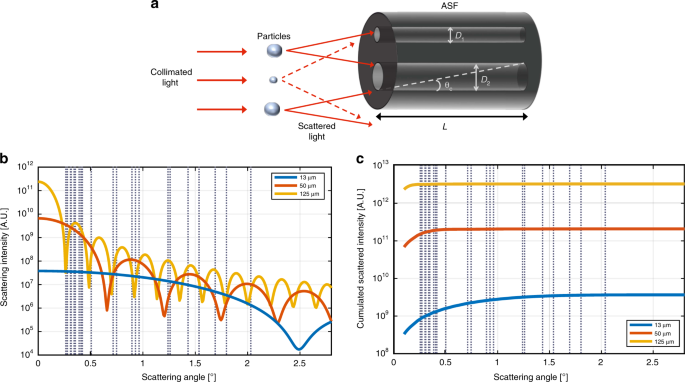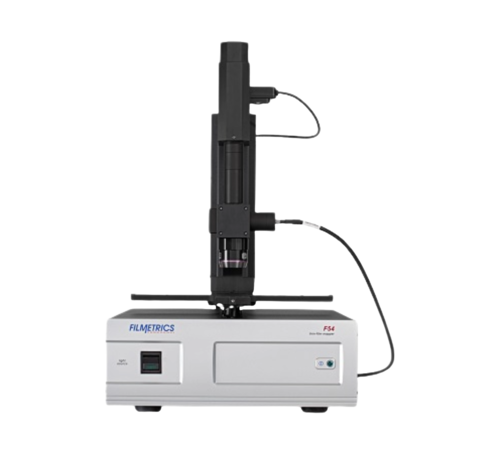Choosing the Right Optical Fibre Diameter Analyser for High Precision
Choosing the Right Optical Fibre Diameter Analyser for High Precision
Blog Article
Maximize Your Fibre Optic Performance: Comprehending Optical Fiber Diameter Analyser Modern Technology
The efficiency of fibre optic systems is critically influenced by the accuracy of their size, a factor often forgot in the search of optimum signal honesty. Comprehending the modern technology behind optical fibre diameter analysers discloses the intricate balance between dimension accuracy and manufacturing top quality.
Value of Optical Fiber Size
The diameter of optical fiber plays a vital function in figuring out the efficiency and efficiency of communication systems. It affects several vital specifications, consisting of the setting of light proliferation, depletion, and data transfer ability. Larger diameters typically permit numerous light modes, facilitating greater data transmission rates. Conversely, smaller sizes tend to support less modes, which can improve signal clearness and minimize crosstalk.

Additionally, recognizing the size's ramifications can cause set you back savings by decreasing the demand for signal amplification and repeaters in considerable networks (optical fibre diameter analyser). To conclude, the importance of optical fiber size can not be overemphasized, as it straight affects the total performance and integrity of modern-day interaction systems

Just How Size Impacts Signal Quality
Signal quality in optical fibre systems hinges considerably on the diameter of the fiber. The size influences several key criteria, consisting of depletion, transmission capacity, and modal diffusion. A smaller diameter can cause greater depletion prices, resulting in signal loss as light journeys via the fiber. This depletion can endanger the honesty of the transmitted data, leading to a decline in signal quality, especially over cross countries.
Conversely, larger diameters normally enable for enhanced light capture and minimized modal diffusion, enhancing signal clarity. In multimode fibres, a bigger core size can sustain multiple light modes, but it may additionally introduce intermodal diffusion, which can degrade signal quality. As a result, picking the optimal fibre size is important for accomplishing the wanted performance in certain applications.
Furthermore, the communication between the fiber diameter and the wavelength of the light used plays a crucial duty in identifying the efficient transmission distance and overall signal integrity. Understanding exactly how fibre size influences signal high quality is important for network developers and designers aiming to maximize optical fiber systems for reliable, high-speed data transmission.
Summary of Size Analyser Modern Technology
In several optical fibre production processes, accurate dimension of fiber diameter is essential for ensuring consistent efficiency and quality (optical fibre diameter analyser). Size analysers are advanced instruments created to examine the physical measurements of optical fibres with high precision. They utilize sophisticated optical and laser technologies to gauge the diameter, ovality, and concentricity of the fiber, therefore supplying vital data for quality control
These analysers can run in-line during the production process or as component of off-line testing protocols. In-line systems allow real-time monitoring, enabling producers to adjust specifications quickly, therefore maintaining ideal production conditions. Off-line analysers, on the other hand, supply thorough assessments of batches, making certain that any variances from specified resistances are recognized and dealt with.
Size analysers considerably contribute to the decrease of issues in optical fibers, improving total item integrity. By constantly measuring key parameters, these modern technologies help with conformity with market criteria and specs. As the need for high-performance optical fibers remains to increase, the function of diameter analysers becomes significantly important in accomplishing the preferred top quality and efficiency criteria in fiber optic systems.
Key Functions of Fibre Size Analysers
Although numerous models of fiber size analysers exist, they commonly share several crucial attributes that enhance their capability and integrity. Among one of the most considerable features is high-resolution measurement capacities, which make sure exact diameter readings, important for keeping top quality control in fibre manufacturing. Additionally, many analysers incorporate sophisticated optical sensors created to detect minute variations in fiber size, hence giving invaluable important link data for process optimization.
One more important feature is real-time surveillance, permitting operators to receive instant feedback on fiber size throughout the production process (optical fibre diameter analyser). This ability helps with rapid modifications and lowers the probability of issues. Several analysers likewise come outfitted with easy to use interfaces, making it possible for operators to conveniently navigate with information and setups outputs
Additionally, durable information storage space and analysis functionalities are important for tracking historic performance patterns and making sure compliance with market standards. These functions collectively contribute to the effectiveness of fiber diameter analysers in maximizing fiber optic efficiency.
Best Practices for Fiber Optimization

First, routine calibration of optical fiber diameter analysers is essential. This makes certain precise measurements and decreases possible inconsistencies that could impact performance. Next off, preserving a clean working setting is essential; dust and impurities can result in signal destruction.
Furthermore, it is essential to select fibers that satisfy specific application needs. This entails examining factors such as depletion, bandwidth, and ecological problems. Proper installment strategies should likewise be stuck to, including avoiding sharp bends and too much tension, which can jeopardize fiber integrity.
Moreover, using advanced tracking systems you could try these out can facilitate real-time performance assessments, making it possible for prompt identification of problems. Normal testing and maintenance ought to be conducted to guarantee that fibers continue to be within optimum operational specifications.
Last but not least, training personnel on the most up to date fiber optimization technologies and methodologies will boost their capacity to execute reliable approaches. By adhering to these best methods, companies can considerably enhance the performance and life-span of their optical fibre systems, making certain efficient interaction and information transfer.
Final Thought
In verdict, the integration of optical fiber size analyser technology is important for making the most of fibre optic performance. By making sure exact measurements of fibre dimensions, these analysers significantly enhance signal quality and reduce losses throughout information transmission. Routine calibration and maintenance of the analysers are imperative to copyright optimum efficiency and compliance with sector requirements. Inevitably, the application of this modern technology promotes enhanced data transmission prices and reinforces signal integrity, adding to the overall performance of fiber optic systems.
Signal high quality in optical fibre systems hinges considerably on the size of the fibre.In several optical fibre production processes, accurate measurement of fiber diameter is crucial for making sure consistent efficiency and high quality. As the demand for high-performance optical fibers continues to increase, the function of size analysers comes to be increasingly important in attaining the desired top quality and performance requirements in fiber optic systems.
These features jointly contribute to the efficiency of fibre size analysers in enhancing fiber optic efficiency.
In final thought, the assimilation of optical fibre diameter analyser innovation is crucial for maximizing fibre optic efficiency.
Report this page